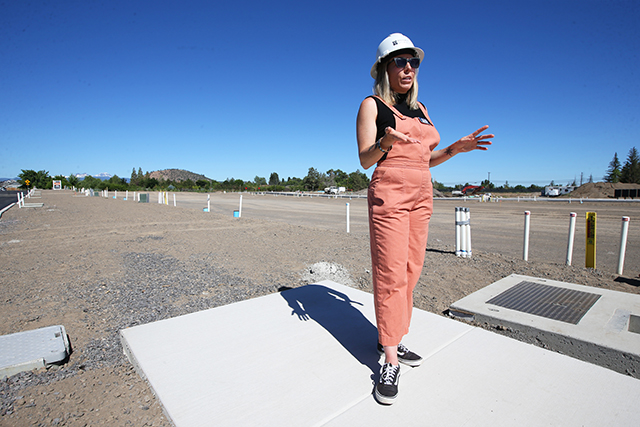Aid groups brace for drop in giving
Published 5:00 am Friday, September 23, 2005
In the month following the terrorist attacks that killed nearly 3,000 people on Sept. 11, 2001, the Boys and Girls Clubs of Central Oregon took a $77,000 hit in donations during a 10-day period.
Now, less than a month after Hurricane Katrina chewed up much of the Gulf Coast region, some local nonprofits say it’s too early to tell how much their donations will dry up in the wake of the national disaster.
Trending
But with the track record after 9/11, and with Hurricane Rita bearing down on the Texas coast, many local organizations are bracing for a tough year in fundraising.
”It’s a guess,” said Ken Wilhelm, executive director of Deschutes County United Way. ”But because of the scale, we’re nervous.”
Wilhelm said crises like 9/11 and Hurricane Katrina can be double-edged swords for organizations that rely on fundraising.
On the one hand, they raise awareness about the power of donating. But local organizations sometimes end up taking a back seat to national relief efforts.
Instead of making a choice, Wilhelm said United Way is encouraging people to donate to local nonprofits and hurricane relief efforts.
”We’re asking folks to continue to support local issues,” Wilhelm said. ”We still have the needs locally that don’t go away just because of the hurricane.”
Trending
The Deschutes County United Way had a strong start toward reaching its goal of raising $1.3 million for the 2005-2006 fiscal year.
The organization kicked off a 10-week fundraising campaign on Tuesday with $64,000 netted from early Pacesetter campaigns held at local companies, he said.
Last year, United Way started its major fundraising campaign on Sept. 14 and had only raised about $42,000 by the end of its first week, he said.
But its fundraising campaign relies on a strong finish, which might wane because of hurricane relief efforts.
Not all local nonprofits are holding their breath.
”I think the fears are worse than the reality,” said Toni Ryan, the executive director for the Central Oregon Battering and Rape Alliance.
Ryan said her organization relies on donors who regularly give and support their cause. The bulk of people who are giving to Hurricane Katrina relief efforts may be first-time or one-time donors, she reasoned.
”It’s different when you have an event as a catalyst. It strikes a chord in people who would not normally give,” Ryan said.
COBRA’s annual budget is $800,000, and it receives about $100,000 in donations. So far, COBRA has taken in about $5,600 in donations since July – the start of its fiscal year – compared to the $6,000 it had by the same time last year.
Kirk Utzinger, the president of the Boys and Girls Clubs of Central Oregon, said there has been a slight decline in individual contributions since the hurricane hit.
The organization is projecting a $100,000 to $110,000 decline in donations in the next six months.
The Boys and Girls Clubs of Central Oregon has an annual budget of about $2.3 million, 65 percent of which comes from a mix of individual and corporate donations, he said. The money is used to serve about 1,100 youths on a daily basis at its eight community clubs.
There is no talk of program cuts yet. But if donations plummet this year, it could be on the horizon, he said.
”We will continue to be very prudent in our spending,” Utzinger said. ”We hope that the community continues to support as they can. Our clubs are busting at the seams and we need each and every generous contribution that we get.”
Historical lessons
To see how local giving may drop off after a widespread disaster, many local nonprofits are looking at what happened after 9/11 and the 2004 Indian Ocean tsunami that devastated South Asian countries.
Bob Smit, the executive director for the KIDS Center, which does diagnostic testing for child abuse victims, estimated that after 9/11, donations plunged about $50,000. About a third of its $900,000 annual budget comes from donations.
The center was able to bridge the gap with grants and a one-time foundation contribution.
But when donations ebb, it strains resources.
”We have to scramble and make some strategic decisions around service delivery and the number of kids we are able to see,” Smit said.
The organization has seen a slight drop in donations since the hurricane, and it still needs to raise another $40,000 between now and the end of the year, he said.
”We will watch this closely, and if we do need to make adjustments, we will and we’ll plan accordingly,” Smit said. ”Our hope is that it doesn’t have the same reaction as 9/11.”
Woody Medeiros, the executive director of Grandma’s House, said she is expecting a slight, but temporary, dip in contributions based on what happened after 9/11.
The shelter for pregnant mothers relies on fundraising to make up about 60 percent of its $100,000 annual budget, she said.
”It was kind of temporary,” Medeiros said. ”As things balanced out, then everything went back to normal.”
United Way in Central Oregon saw a surge in contributions after 9/11, with donations increasing by 10 percent, said Wilhelm, the executive director.
But Wilhelm said one can’t draw the same parallels between 9/11 and Hurricane Katrina because of the scale of devastation.
Hurricane Katrina has created uncharted territory when it comes to fundraising impacts, said Joyce White, executive director of Grantmakers of Oregon and southwest Washington, a membership association for nonprofit foundations.
”I don’t think we have seen anything of this magnitude or the outpouring of contributions,” White said.
White said many nonprofits are expressing concern about how the hurricane may affect their fundraising capabilities, especially since so many of them rely on end-of-the-year campaigns.
”I think it would be unreasonable to expect there to be no impact. But no one has a real sense of what it’s going to mean in terms of dollars,” White said. ”Social service groups always struggle to find out how to keep resources in place, but a national disaster certainly exacerbates the situation and amplifies the conversation.”








